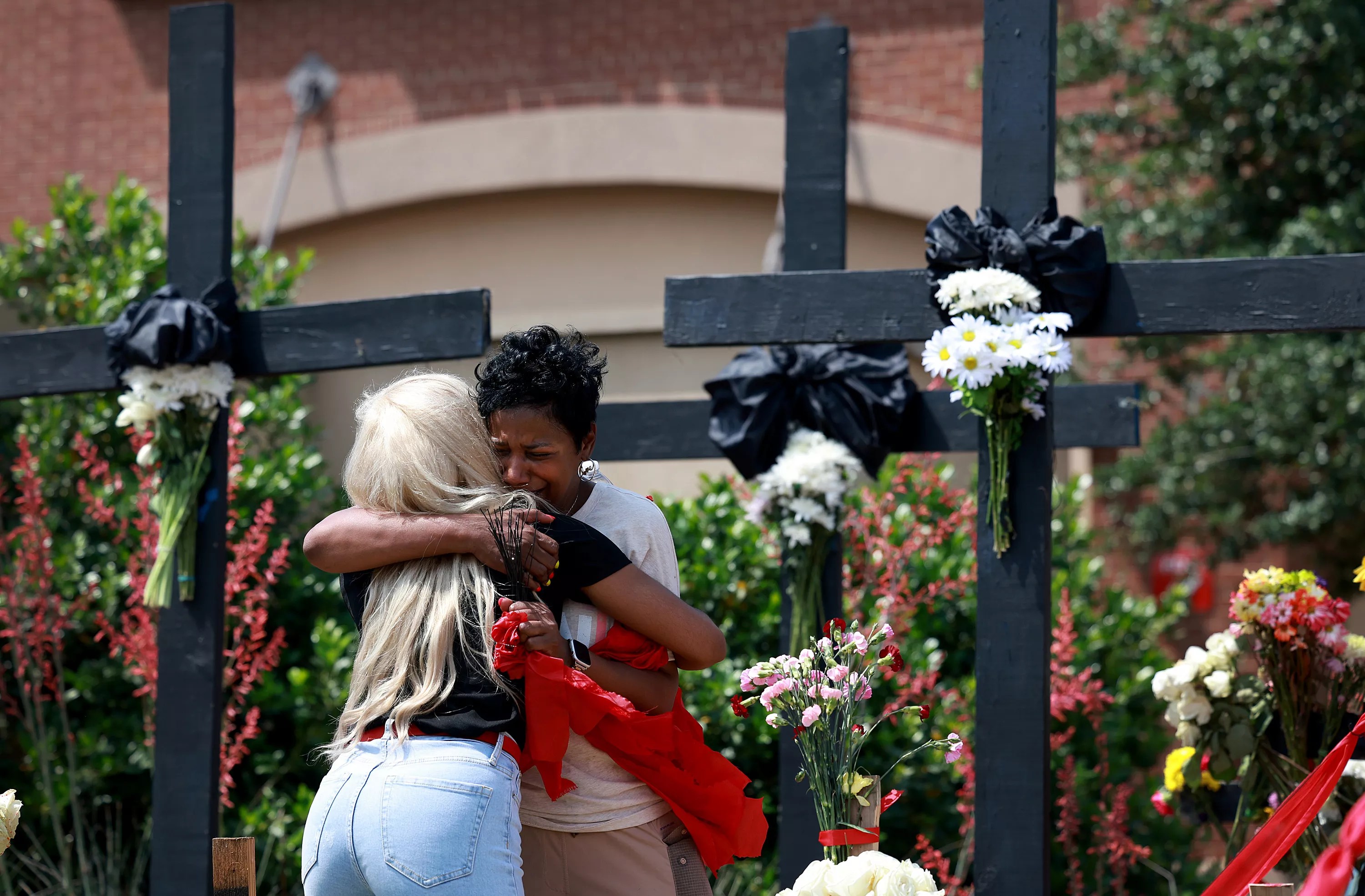
Joe Raedle/Getty Images

Audio By Carbonatix
The 33-year-old Allen shooter bore Nazi tattoos and ranted on social media about women, people of color and Jews. He also happened to be a Hispanic man named Mauricio Garcia.
On Saturday, Garcia killed eight people and injured several others at the Allen Premium Outlets mall before being fatally shot by a police officer at the scene. Since then, the Dallas resident’s racist posts have confused conservatives, some of whom are perplexed by the idea that a person with the last name “Garcia” could be a self-described “full blown [sic] white supremacist.”
But recently published entries from Garcia’s journal reveal that he struggled to come to terms with his background.
“I used to think of myself as Benny [Rodriguez] from The Sandlot. An all American kid who just happens to be not white,” Garcia reportedly penned. “I’m just a visitor. I’m Hispanic whether I like it or not.”
He also seemingly wore his prejudice as a badge of honor, writing that a white friend once told him, “I’m not a racist compared to you.”
The Allen massacre is the latest in a series of violent crimes carried out by far-right extremists. Still, Garcia’s killing spree has spawned conspiracy theories, including that Saturday’s shooting was a so-called false flag operation by the government.
To Heidi Beirich, co-founder of the Global Project Against Hate and Extremism, the idea that the Allen shooting was staged is “completely ridiculous.” The perpetrator was clearly a neo-Nazi, she said, pointing to his writings that were filled with praise for Adolf Hitler.
The way Beirich sees it, the chatter surrounding whether Garcia could be a legitimate neo-Nazi distracts from the conversation that needs to take place: the fact that these ideas are spreading on social media.
“People are being radicalized, and they’re committing violence,” she said. “We should be talking about, ‘What are we going to do about this?’, not claiming that the Allen mall attack was a false flag or, ‘This guy couldn’t possibly have been a racist.'”
Other Texans with Hispanic/Latino heritage have committed headline-grabbing racist hate crimes. Last year, Midland’s Jose Gomez III pleaded guilty to attacking an Asian family because he thought they were Chinese and, therefore, “responsible for the COVID-19 pandemic,” according to the Department of Justice.
Beirich noted that political commentator Nick Fuentes is a white supremacist and Holocaust denier whose father is reportedly half Mexican American. Afro-Cuban Enrique Tarrio, the former leader of the violent extremist group Proud Boys, was convicted of seditious conspiracy earlier this month over his role in the U.S. Capitol attack on Jan. 6, 2021.
Beirich also cited the case of Leo Felton, a biracial neo-Nazi and white supremacist. In 2001, the Southern Poverty Law Center’s Intelligence Report magazine wrote that Felton – whose dad was Black – had been implicated in a plot to “bomb [B]lack or Jewish landmarks to ignite a race war.” (He has since reportedly “renounced his racism.”)
Self-loathing is a key issue in cases like these, as is the country’s history of white supremacy: “Generally, these are people who … see a culture in which whiteness is prized,” Beirich said.
“And they want to be part of the dominant culture, right? They’re attracted to these ideas,” she continued. “So they assume an identity that is different from the ethnicity that they’re born into, and it resonates with power and all the things that [Garcia] was attracted to: violence, power, dominance.”
“They want to be part of the dominant culture, right? They’re attracted to these ideas.” – Heidi Beirich, Global Project Against Hate and Extremism
Michael Phillips, a senior research fellow at the Clements Center for Southwest Studies at Southern Methodist University, wasn’t surprised to learn that Garcia identified as a white supremacist. Phillips touched on a similar theme in his book White Metropolis and said it has roots in Mexican history.
In the early 1800s, people who claimed pure Spanish ancestry sat at the top of Mexican society and tended to be wealthy, Phillips said. Below them in the hierarchy were enslaved people, indigenous people and people of mixed race, all of whom were viewed as racially inferior.
“There’s also a phrase in Latin America … ‘money whitens.’ In other words, the richer you are, the whiter you are. And of course, the whiter you are, the higher status you have,” he said. “So this is a really big, big, big part of Mexican history, and it’s part of the whole European heritage of white supremacy.”
Fast-forward to early 1950s North Texas: A Hispanic man helped lead an effort to prevent the integration of a South Dallas neighborhood, including by erecting “For Whites Only” signs on sellers’ front yards, Phillips said. He was connected to the bombing of a Black home, and also threatened families at knifepoint to not accept Black buyers, in the hope that oppressing others would effectively boost his own social capital.
Later, Phillips added: “I want to be clear that I’m not saying that this is a majority thing, just that that element is there. The idea of people who are Tejanos or Latinos thinking of themselves as white is not new at all.”
Yet there is no universal definition of what it means to be “white,” Phillips said. Whiteness doesn’t exist as a category scientifically. At certain points in history, Irish, Italian and Jewish people also didn’t fall under that umbrella.
Phillips noted that Collin County, where the mass shooting occurred, is an “epicenter of political extremism,” including for those with Islamophobic views and Jan. 6 insurrectionists. “Dallas-Fort Worth, period, is a magnet for political extremism – even as Dallas turns blue and the city of Fort Worth turns blue,” he said.
“There are still elements in Dallas and Fort Worth, but also the suburbs are even more extreme,” he continued. “This is an unspeakable tragedy, but I’m surprised things like this haven’t happened more often.”